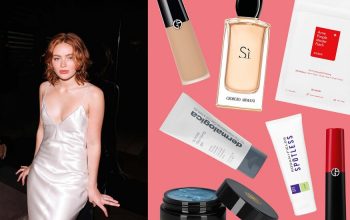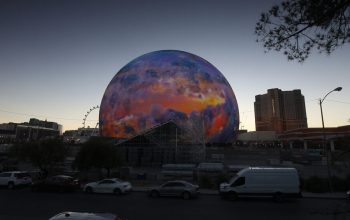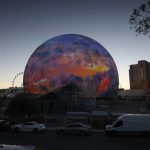An unusual nigiri will soon be on offer at Bar Miller, a new omakase restaurant in New York City’s East Village: the humble bluefish, sourced from the New York-New Jersey coast, served raw. “Bluefish has this reputation as being a lesser tier, like a poor man’s fish. But if you treat it with care, it’s incredible,” says Jeff Miller, the executive chef. “When it’s in season, it’s rich, fatty and buttery, with a little bit of subtle tuna iron quality.” Featuring bluefish on a sushi menu is surprising when the city is awash with omakase that, like those in Tokyo, offer prestigious (but unsustainable, according to Seafood Watch) fish like bluefin tuna, Japanese yellowtail and Japanese eel. “Sometimes I think my life would be so much easier If I’d gone that route,” Miller says in reference to the classic omakase menu for which there are standard suppliers. Instead, through trial and error, he built a menu entirely from domestic fish. Bar Miller, which is set to open on Sept. 27, serves San Franciscan anchovies, Hudson Valley eel head trout, and Long Island porgy. (The latter, Miller says, tastes sweet and “super subtle [with] a deep oceanic flavor.”) Miller’s attention to local delicacies extends beyond marine life: The restaurant’s sushi rice is farmed in the Hudson Valley; its sushi vinegar is fermented in Pennsylvania; its soy sauce comes from Connecticut. Even its sake is hyperlocal, fermented in Sunset Park and Bushwick. For Miller, sourcing locally is about expanding on his lifelong appreciation of Japanese cuisine; sustainability is an attendant benefit. barmiller.com.
collect these
A Printmaker’s Proliferating Vending Machines
The Portland, Maine-based linocut printmaker Anastasia Inciardi has found a new way to connect with collectors. Last weekend, she installed a vending machine at the specialty grocer and boutique Big Night’s Brooklyn location. Visitors put in four quarters for a surprise miniature print about the size of a playing card. Inciardi, whose work is focused on food, allows the vending machine’s host to customize the selection of prints; at Big Night, options include a stick of butter, a piece of farfalle, a green olive and a tin of sardines. In Maine, where Inciardi has a vending machine at the downtown Portland shop Soleil (among her offerings are a Cheez-It and a slice of clementine) and the Brunswick bakery Wild Oats, she’ll typically sell a hundred prints a day in each location. (She also regularly brings a third machine from her studio to the Brunswick-Topsham Farmers’ Market.) At Big Night, the machine, which holds 500 prints, had to be replenished within a day. Inciardi grew up in Park Slope, Brooklyn, and she drew inspiration from the temporary tattoo machine at her local Key Foods, as well as an Art-o-mat — a converted cigarette vending machine stocked with pieces by local artists, part of a nationwide project that started in 1997. Eventually, she hopes to have mini print dispensers around the world, but in the meantime, she plans to start selling surprise prints — “like baseball card packs, you can order a pack of seven and you don’t know what you’re going to get,” she explains — from her website on Nov. 12. instagram.com/inciardi.
The photographer Micaiah Carter has spent the last seven years building a portfolio of magazine covers, high-profile campaigns and solo exhibitions. His debut monograph, “What’s My Name,” takes its title and spirit from the idea that “for many Black people, your family name means a lot,” Carter says, noting that oftentimes a surname is a shorthand for how you fit into a larger social and historical context. Out next month from Prestel, the book is a collection of recent commercial, editorial and fine art portraits, as well as more personal family photos. Amid images of Pharrell Williams, Missy Elliott, Spike Lee and top models are time-faded snapshots from the Carter family archives that show 1970s house parties, joyful embraces and reunions in Southern California’s summer heat. “When I placed pictures by my dad or mom together with my own work, I realized that the way I see the world is similar to the way they saw Blackness,” he says. So, for every portrait of a celebrity, readers get an intimate look at the individual who created it. $60, penguinrandomhouse.com.
See This
An Iraqi Painter’s Haunting Night Scenes
The Iraqi-born, London-based painter Mohammed Sami’s debut U.S. show, “Muzzle of Time,” at Luhring Augustine Chelsea in Manhattan, plays on the multiple meanings of “muzzle”: a metaphor for the censorship of speech and the opening of a gun’s barrel from which a bullet explodes. In Sami’s paintings, retrospection can be both muted and incendiary. The artist was born and raised in Baghdad at the height of Saddam Hussein’s totalitarian reign and emigrated to Sweden following the subsequent U.S. invasion; much of his work is dedicated to memorializing the psychic shock of war and displacement. Sami’s most affecting paintings depict haunting interiors absent of all characters, often with hints of action happening just beyond the frame, and moody nocturnes of towns or cities without particular geographic moorings, as if they are places conjured from dreams. “In my homeland, night represents a poetic element,” Sami says. “After the war, people are still waiting for the night to awaken from its coma.” While the settings are sourced from his youth, the use of vivid color palettes and depictions of night scenes and everyday objects evoke the 19th-century intimism of Les Nabis and other Post-Impressionists, proving that figurative painting can borrow from old artistic forms and still arouse intense emotions about the complexities of contemporary life. “Mohammed Sami: Muzzle of Time” runs through Oct. 28, luhringaugustine.com.
Stay Here
A New Art-Filled Boutique Hotel in Tuscany’s Val d’Orcia
Some of Europe’s most compelling boutique hotels have been conceived by art collectors. There’s Manuela and Iwan Wirth’s Fife Arms in Scotland and Maja Hoffmann’s L’Arlatan in Arles, France, designed by the artist Jorge Pardo. The latest example is near Pienza, a picturesque town in Tuscany, with exceptional views of the wild, protected region of Val d’Orcia: Casa Newton, a nine-room, two-suite property owned by the Swiss art-collecting couple Philippe and Tonie Bertherat. The property’s saturated colors (the facade is painted a blood red) and eclectic design aesthetic are a personal signature, says Tonie: “It’s the same way we have designed our own houses.” In the hotel’s salon, Gio Ponti sofas reupholstered with bright orange velvet are backed by Josef Frank patterned curtains and a Hans-Agne Jakobsson pendant lamp hangs over a midcentury Italian game table. Artworks are scattered throughout the property: A neon installation by Joseph Kosuth greets guests in the entrance, an edition of prints by Josef Albers line the stairwell and the floor-to-ceiling mural of trees in the chapel was painted by Nicolas Party. Even the hotel’s general manager, Nicole Boissonnas, came from the art world: Her last job was at the MAMCO, a contemporary art museum in Geneva. Casa Newton opens on Sept. 21; from about $427 a night, casa-newton.com.
The Colombian curator Danielle Juliao has assembled a group of four artists from disparate corners of Latin America for “Paraíso,” a multimedia exhibition in a pop-up space in Manhattan’s Chelsea neighborhood. The show, as the title hints, explores interpretations of paradise through photography, video and painting. The photographer María Elena Valdés included a new documentary series capturing Bridgettine nuns and their cloister in her hometown Puebla, Mexico. Alex de la Torre, a painter from Barranquilla, Colombia, meditated on the human capacity to adapt to adverse conditions, represented metaphorically in oil paintings of blooming flowers and sprigs of flora growing out of Colombian soda bottles. For the first time since she graduated from design school, the Bogotá-based Ecuadorian painter Salome Coronel returned to screen printing with still lifes of tropical fruit, floral tablecloths and sunny-side-up eggs. The artist Rodrigo Chapa, originally from Monterrey, Mexico, departed from his traditional medium of photography for a four-part series titled “Aparatos.” Combining 3-D modeling with sound design, the so-called apparatuses are not quite instruments; the artist describes them as “digital perpetual motion machines that produce music.” Shown on a screen, one work features a system of glass funnels, which marbles run through, producing different tones and effecting a sort of sonic paradise. “Paraíso” will be on view from Sept. 21 through Oct. 27, concordiastudio.co.
From T’s Instagram







